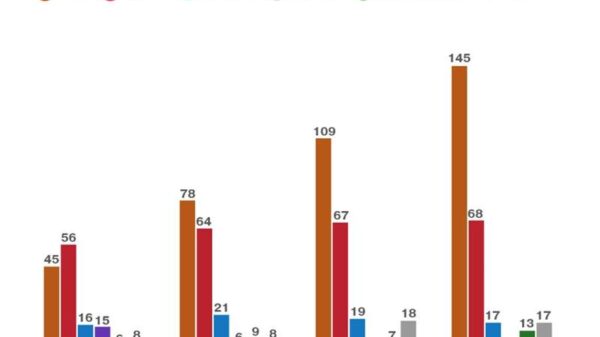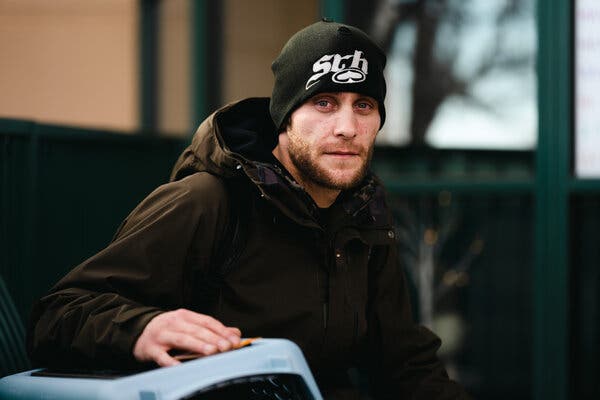LOUISVILLE, Colo. — Bryan Giles, who fled with his cat, Chloe, finds himself replaying their harrowing escape from the blaze. The Manz family is scouring the ruins of their home for family heirlooms. Nan Boultbee and Lex Kell are still waiting for their street to reopen to catch a glimpse of the four-bedroom house they had lived in for five years, now torched.
In this part of the drought-stricken West, wildfires come more often now. They sweep through neighborhoods and often retreat as quickly as they came, leaving behind new landscapes of suburban rubble — this one, after the devastating blaze that swept through the area around Boulder, Colo., softened under a sudden snow.
But like the coals that were still glowing days later under the frost, the extent of what was lost and the challenge of what comes next is only now becoming apparent to those who lived in the 1,084 homes and other residential structures that were lost in one of the worst wildfires in Colorado history.
On Wednesday, officials reported the first confirmed death from the blaze, announcing that they had found the partial remains of an adult about half a mile from an area being investigated as a possible source of the fire. One other person remained missing.

“We all thought we were coming back,” said Ms. Boultbee, 66, a software programmer who escaped with her wife, Ms. Kell, also 66. Now she finds herself waking up in the middle of the night, asking, “Why didn’t I grab this or that?”
They make their way down the ruined streets, searching for fragments from what was once their living room. They pore over rental ads on the internet, recalibrating their options in a housing market that had been tight and expensive even before the disaster. They talk about new definitions of what is safe and what is not, what should be considered important, who counts.
At a shelter for evacuees, Mr. Giles held all he has left: a white plastic bag with a change of clothes, a backpack and the cat carrier holding Chloe.
“I have to keep myself in check and stay strong for her,” Mr. Giles, 29, said of the 4-year-old tortoiseshell mix who has been at his side almost constantly since the blaze on Dec. 30. “She’s kind of my emotional anchor. I don’t know if I would have been able to handle this if we were separated.”



Erin Schaff/The New York Times
“We literally had seconds if not a minute or two to get out,” Bryan Giles said as he held his cat, Chloe, on his cot at a Red Cross shelter.
Mr. Giles and his roommate, whom he also works with, are looking for housing options they can afford.
He has nowhere to leave Chloe and his sack of belongings while living at the shelter.
Mr. Giles, who works as a private security guard, spotted the first plume of white smoke across the brittle grasses near his home in the town of Superior shortly before 11 a.m. that day. His subdivision, where he lived in a five-bedroom home with a roommate, was enveloped by smoke within half an hour.
“It was so black, I couldn’t even see across the street,” he said. He scrambled to grab his roommate’s two dogs, as well as Chloe, before flagging a ride away from the flames.
After that, a friend at work gave him a bicycle. Other friends are trying to pull together enough money for his first and last months’ rent on a new place to live.
For the moment, though, Mr. Giles returns each night to the Red Cross shelter where he and Chloe are sleeping. He has had time there to reflect on what happened, but has not come up with any explanation for it.
“There’s only one question I would ask,” Mr. Giles said. “Why me? Why now?”
‘Our whole ridge was on fire’
Hours after fleeing from the blaze, Andy Manz, 44, got a glimpse of its devastation. He and several homeowners “incognitoed it” back into their neighborhood on foot that night, against evacuation orders. Their way was lit by headlamps and the still-raging flames.
“Our whole ridge was on fire,” said Mr. Manz, who copublishes Boulder Lifestyle magazine with his wife, Katie. “Our next-door neighbor’s was totally engulfed in flames. Our house was already burned to the ground.”
Theirs was one of dozens of houses in the upscale Spanish Hills subdivision, from rustic 1950s ranch-style properties to contemporary dream homes, that were leveled to smoldering foundations and soot-scarred brick chimneys.
The Manzes were at home when the fire leapt across U.S. 36, a nearby highway. They were able to gather their four children and rescue dog before making their escape.
Ms. Manz said it was their first holiday season with an 18-foot Christmas tree that reached all the way to the living room ceiling.
It was gone. The pearls handed down from her great-grandmother, they were somewhere in the ashes. So were the paintings.
“The art was not really valuable, but it was valuable to us, because it was mostly by our kids,” Ms. Manz said.
She held her daughter Farrah and they recalled the last thing they could remember about living there: It was the two of them, sitting over there on what was the couch, cuddling.
“We still have the memory,” Ms. Manz said, “even though the room is gone.”



Erin Schaff/The New York Times
Katie and Andy Manz thought they would be returning to their home after the evacuation order was lifted. They did not expect their home would be rubble.
Farrah Manz, 10, created a stuffed animal from a sock to fill in for the ones she lost in the fire.
As her mother drove through their neighborhood Farrah quietly cried, looking at the destruction.
Ms. Manz said she had been struck by something their oldest child, August, 11, had said.
“He said: ‘It’s kind of cool to lose everything. We can do anything now,’” Ms. Manz recounted. She realized he was right. “It’s changing our perspective on material things,” she said.
The family has been staying at the temporarily vacant home of friends in Boulder. They hope to rent one of the homes in Spanish Hills that survived the blaze until they can rebuild — though the insurance, they are realizing, will not cover all the costs.
It could take years.
Mr. Manz has been steering his Ford pickup through the snow-packed streets, looking to see whose homes were spared. “Every time I see a house that’s still standing, I’m just glad there’s one more house that made it,” he said.
Yet the fire followed no logic; it left no explanations.
“I believe in some divine intervention,” Mr. Manz said. “But I don’t understand it.”
‘We don’t have a home to go home to’
Nan Boultbee and Lex Kell fled their four-bedroom, 3,000-square-foot house in the Enclave subdivision, perched on the western perimeter of the city of Louisville. They have leaned on friends in the fire’s aftermath.
The couple had frantically packed a few things — tax papers, a couple of changes of underwear, some sweats — and then drove out in separate cars with their two dogs, R.E., a 17-year-old Russell terrier and cocker mix, and Tucker, a 13-year-old beagle.
The couple landed at the home of friends who live a few miles away. There, they met up with two other couples from their neighborhood, Cindy Stonesmith and her husband Matt, along with Hank Shaw and his wife, Joanne Speirs.
The three couples had grown close through the pandemic, enjoying socially distanced outdoor dinners together, and in those first hours they shared tense stories about their hurried departures. But that same afternoon, they had to move again — the friend’s neighborhood was now being evacuated. Their next refuge was a Hampton Inn in Longmont, about 15 miles to the north.
Their nomadic journey continued this week, as the three couples landed in an extended-stay lodge in the Denver suburb of Broomfield. Insurance will pay for them to stay there for the near future.
After that, Ms. Kell and Ms. Boultbee thought they might be able to move on to a house-sitting situation at a friend’s home in Louisville — but plans to visit there to discuss an arrangement were temporarily scuttled when the friend reported symptoms that sounded like Covid. Now, they are looking to move there temporarily at the end of the month. If all goes as planned. Which so far, it has not.
Several days into the new life that a natural disaster has forced them to confront, Ms. Kell was still navigating turbulent emotions.
“I don’t think the reality of what happened has set in yet,” she said. “It’s shocking to know I have absolutely nothing. I just don’t. And we don’t have a home to go home to.”




Erin Schaff/The New York Times
Everywhere Nan Boultbee and Lex Kell go, they run into friends and neighbors who share in their grief.
They have been living at a hotel with other neighbors who lost their homes.
The paperwork and phone calls have been endless. Their insurance company wants photos of their home, but their street is still blocked off.
The two have tried to stay hopeful while searching for a new place to live.
Their friends have made generous donations.
“They are in tears for us,” Ms. Kell said. “That is overwhelming for us. Because we, too, are in tears.”
But being with other friends who are similarly affected has been crucial.
“The upside for us is being with the other two couples that are our immediate neighbors,” Ms. Boultbee said. “It has been amazingly important for all of us to be together, and to relax a bit with each other, and not focus on the enormity of what’s ahead for us. And, what’s gone from us.”
It might be that no one knows in advance which of the things that are lost will mean the most. For Ms. Boultbee, one that loomed large was a bottle of Old Spice, the favored scent of her father, Jim Boultbee, who died in 2011. That scent has often helped her summon his memory.
Her sister, who lives in California, arranged for a care package that got dropped off not long ago.
In it, there was a board game to play through the long, anxious evenings; there were taco fixings, and crackers, glasses and cups. Also, a bottle of Old Spice.





























